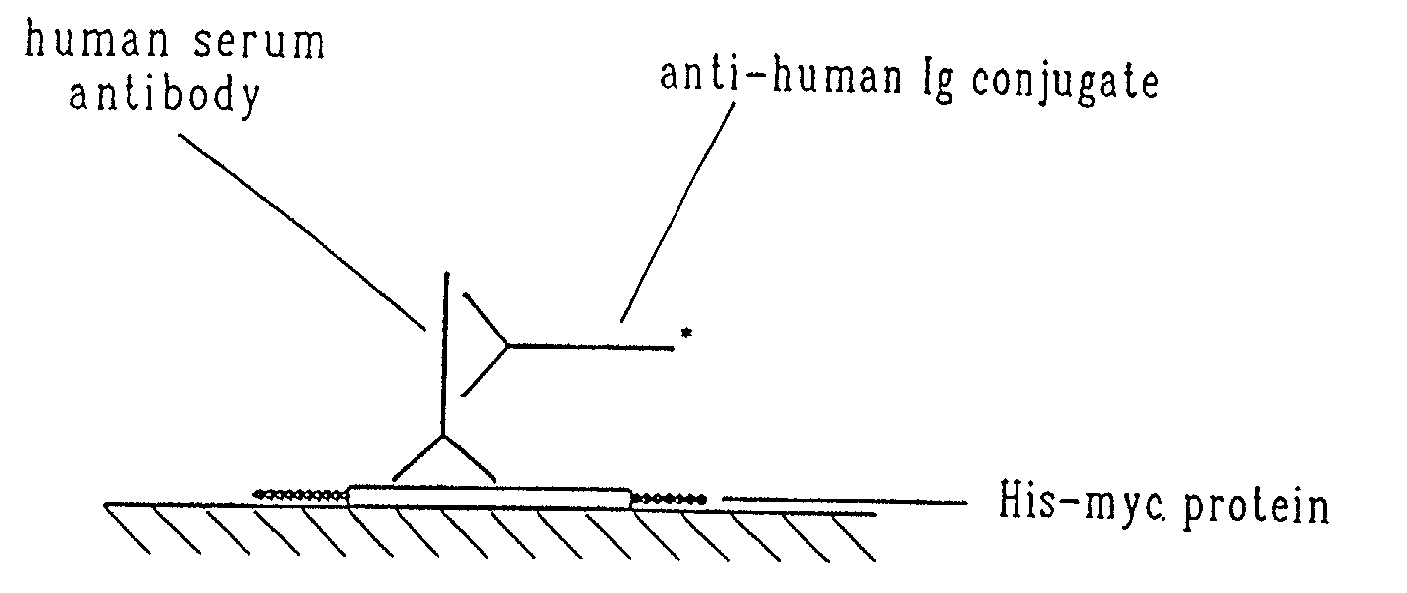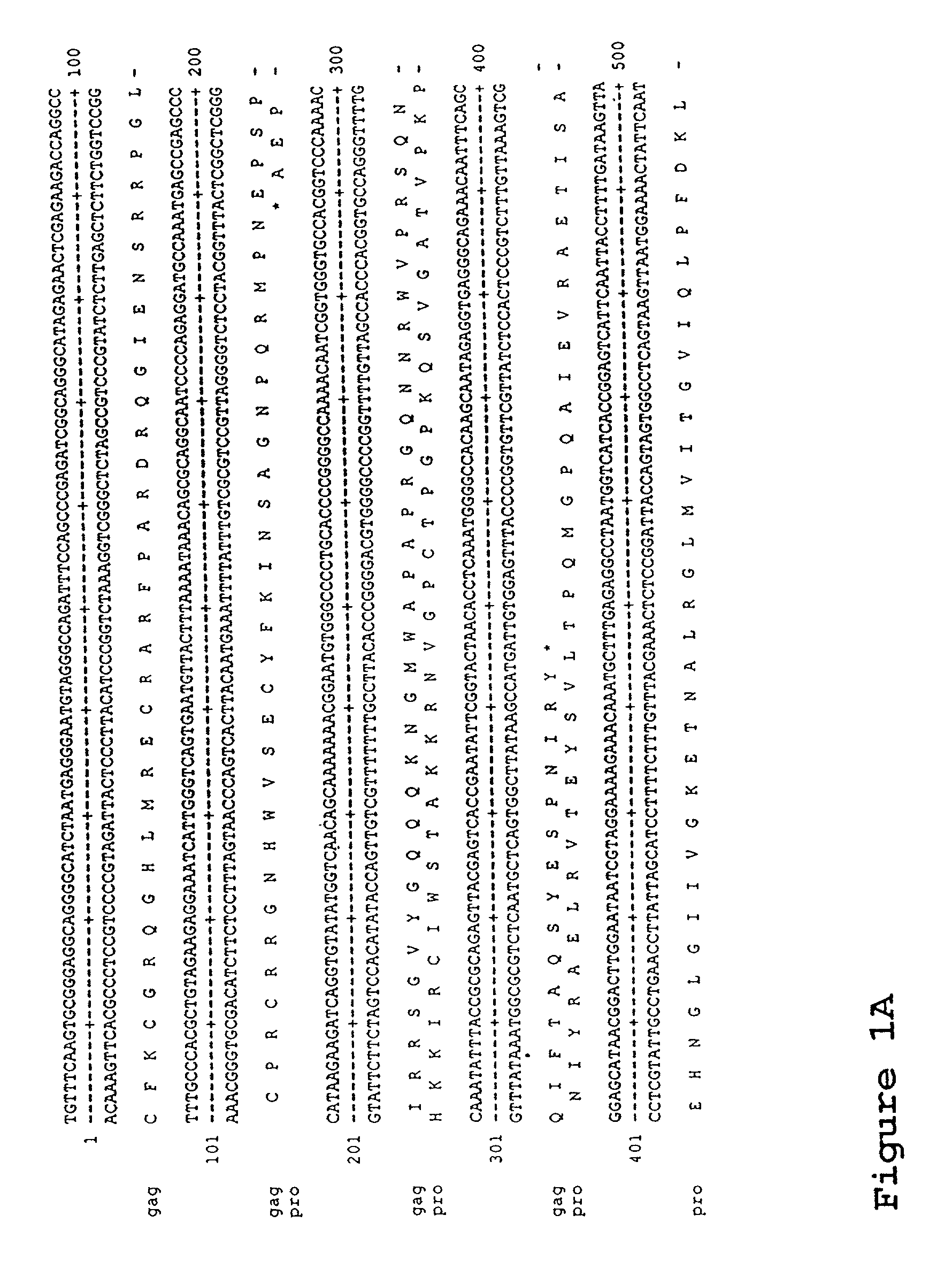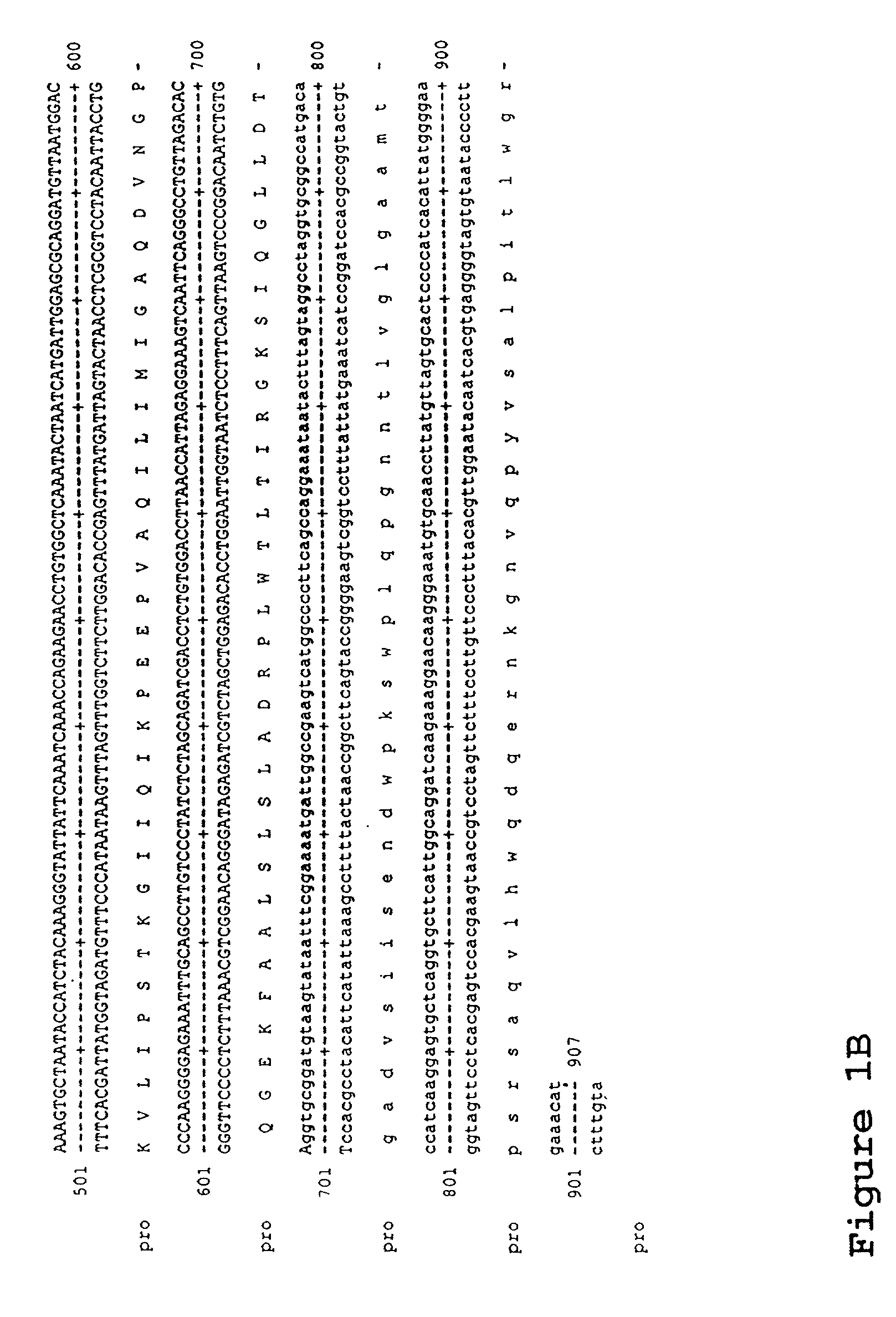Material and methods relating to a novel retrovirus
a retrovirus and material technology, applied in the field of new retroviruses, can solve the problems of inability to conduct epidemiological studies, inability to demonstrate direct evidence, and inability to further characterise hrv-5,
- Summary
- Abstract
- Description
- Claims
- Application Information
AI Technical Summary
Problems solved by technology
Method used
Image
Examples
example 2
[0156] Detection of HRV-5 in Inflamed Joints
[0157] In preliminary experiments, each PCR assay was used to test a number of human DNA samples. Although the different PCR assays had similar sensitivities, surprisingly, primer set 1 (SEQ ID NOS: 29, 30) was found to detect HRV-5 sequences in more human DNA samples than did the other primer sets, i.e. many DNA samples found to be positive by assay 1 were negative using assays 2 and 3. This indicated that assay 1 is more sensitive for detecting HRV-5 DNA in clinical tissue samples than the other assays. This primer set (SEQ ID NOS: 29 and 30) was therefore used to screen a larger number of human DNA samples from a variety of tissues and diseases (Table 1).
4TABLE 1 Frequency of detection of HRV-5 proviral DNA in different tissue samples. Samples Samples Tissue Disease tested positive Synovium Rheumatoid arthritis 25 12 reactive arthritis 5 3 Osteoarthritis 5 3 Psoriatic arthritis 2 2 Ankylosing spondylitis 1 0 Normal 7 0 Salivary Sjogren'...
example 3
[0160] Cloning of the Nucleocapsid Region of HRV-5.
[0161] DNA samples found to be positive for HRV-5 sequences were used to amplify a region upstream of the known sequence of the virus. This PCR utilised a degenerate primer based on the zinc finger sequence motif conserved among retroviral nucleocapsid proteins. This degenerate primer was used in a hemi-nested PCR with reverse primers (from Assay 1) specific for the protease region of HRV-5. Due to the limited amounts of DNA in the samples available for study and the low abundance of HRV-5 in these DNA samples, DNA from different sources was pooled in order to increase the amount of target HRV-5 DNA in the PCR and thereby increase the chances of a successful amplification. The sources of the DNA were normal blood from an apparently normal subject and salivary gland DNA from a patient with rheumatoid arthritis.
[0162] The primers used were:
5 8532 5'- TGYTTYAARTGYGGIMRIMMIGGICA; (SEQ ID NO: 62) 4144 5'- GGTCCTCATTTGTTAATGTCAGTC; (SEQ I...
example 4
[0165] Amplification of HRV-5 Nucleocapsid Sequences from Patients with RA and SLE
[0166] DNA from patients with RA and SLE was tested for the presence of HRV-5 nucleocapsid sequences using nested PCR with primers specific for this region of HRV-5.
[0167] In the first stage, PCR, DNA was amplified with primers:
[0168] NCF3 5'-GCAGGGGCATCTAATGAGGGAAT-3'; (SEQ ID NO: 63)
[0169] NCR1 5'-CTGAAATTGTTTCYGCCCTCACCT-3'; (SEQ ID NO: 64)
[0170] wherein Y is a C or a T.
[0171] Conditions: initial denaturation at 94.degree. C., 4 mins followed by 40 cycles of 94.degree. C., 45 secs, 60.degree. C., 45 secs; 72.degree. C., 45 secs. One microliter of the products transferred to second stage.
[0172] Second stage primers:
6 NCF4 5' - AGATTTCCAGCCCGAGATCGGCAG -3'; (SEQ ID NO: 65) NCR2 5' - TGTGGCCCCATTTGAGGTGTTAG -3'; (SEQ ID NO: 66)
[0173] Conditions at first stage but for only 30 cycles.
[0174] Following agarose gel electrophoresis, PCR products were purified, subcloned into pBluescript and several clones fr...
PUM
| Property | Measurement | Unit |
|---|---|---|
| Tm | aaaaa | aaaaa |
| density | aaaaa | aaaaa |
| temperature | aaaaa | aaaaa |
Abstract
Description
Claims
Application Information
 Login to View More
Login to View More - R&D
- Intellectual Property
- Life Sciences
- Materials
- Tech Scout
- Unparalleled Data Quality
- Higher Quality Content
- 60% Fewer Hallucinations
Browse by: Latest US Patents, China's latest patents, Technical Efficacy Thesaurus, Application Domain, Technology Topic, Popular Technical Reports.
© 2025 PatSnap. All rights reserved.Legal|Privacy policy|Modern Slavery Act Transparency Statement|Sitemap|About US| Contact US: help@patsnap.com



